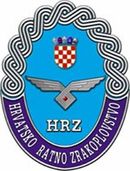| Croatian Air Force and Air Defence | |
|---|---|
|
Emblem of the Croatian Air Force and Defence | |
| Active | 1991 |
| Country | Croatia |
| Size | 1682 personnel [1] |
| H/Q | Pleso Airbase, Zagreb |
| Motto(s) | Hrvatskim nebom bdiju i plove (Croatian Sky they Guard and Fly) |
| Anniversaries | December 12 |
| Equipment | 70 aircraft |
| Engagements |
Croatian War of Independence: * Siege of Dubrovnik * Operation Maslenica * Operation Winter '94 * Operation Flash * Operation Storm Bosnian War * Operation Mistral KFOR |
| Commanders | |
| Current commander | brigadier general Dražen Šćuri (acting) |
| Notable commanders | General Imra Agotić |
| Insignia | |
| Roundel |
  |
| Fin Marking |
  |
| Aircraft flown | |
| Fighter | MiG-21BisD/UMD |
| Patrol | Bell 206B-3, Pilatus PC-9M |
| Trainer | Pilatus PC-9M, Zlin 242L, Bell 206B-3 |
| Transport | An-32B, Mi-8 MTV-1, Mi-171Sh |
The Croatian Air Force and Air Defence (Croatian language: Hrvatsko ratno zrakoplovstvo i protuzračna obrana ) is a branch of the Croatian Armed Forces.
Aviation history[]
The Croatian Air Force as it is known now was established on 12 December 1991, during the Croatian War of Independence. After 2003 a large portion of the fleet was modernized or completely overhauled with the remainder of the outdated fleet being retired. Croatia also acquired new-build transport helicopters, fire-fighting aircraft and basic training aircraft in this period. The planned acquisitions for additional fixed- and rotary-wing transports and fighter aircraft were, after repeated postponements, cancelled due to the economic situation.
Duties[]
The primary role of Croatian Air Force and Air Defence is securing sovereignty of Croatian air space and providing air support to other services during joint operations. It operates the integrated Croatian air defence system. Other tasks include providing help in natural, humanitarian and technological disasters, Search and rescue operations and support to other government agencies.
Commanders[]
Commanders of the Croatian Air Force since its establishment in 1991:
- Imra Agotić
- Josip Čuletić
- Josip Štimac (2001–2002)
- Viktor Koprivnjak (2002–2007)
- Vlado Bagarić (2007–2011)
- Dražen Šćuri (2011–present)
Structure[]

- Air Force Command[2]
- Command company
- 91st Air Force Base – Pleso, Zagreb
- Command company
- 21st Fighter Squadron – MiG-21bisD/UMD
- 27th Transport Aircraft Squadron – An-32B
- 28th Transport Helicopter Squadron – Mi-171Sh
- Air Force Technical Battalion
- 93rd Air Force Base – Zemunik, Zadar
- Command company
- 20th Transport Helicopter Squadron – Mi-8MTV-1
- 885th Firefighting Squadron – CL-415, AT-802
- Fixed-Wing Aircraft Squadron – PC-9M, Zlin 242L
- Helicopter Training Squadron – Bell 206B-3, Mi-8T
- Air Force Technical Battalion
- Air Surveillance Battalion
- Air Force Training Center
Status[]
Croatian fighter pilot puts on his Russian ZSh-5 helmet as he walks towards his MiG-21

Croatian MiG-21bisD

MiG-21UMD, popularly called "Kockica (Dice)"

Croatian Mi-171Sh


Canadair CL-415 filling tanks with water
The core of the air force is a squadron of 10 modernized MiG-21bisD/UMD fighters (two single-seaters lost in a mid-air collision on 23 September 2010. In 2003 a minor upgrade and an extensive overhaul was performed in Romania, incorporating navigation and communication elements of the Lancer standard to make them interoperable with NATO air forces. The aircraft received no upgrade to their weapons systems. Despite initial plans to replace the MiG-21 fleet with a multi-role aircraft in 2013 (delayed from 2011 due to the financial crisis) and an official tender having been issued in 2008, ongoing budgetary constraints have led to the plan being abandoned. As a cost-saving measure, a decision was made to overhaul seven serviceable aiframes already in service and supplement them with five additional airframes from Ukrspetsexport. This temporary measure will see the fleet return to 8 single-seat and 4 twin-seat fighters that will remain in service only until the end of 2019.
Pilot training is conducted on two types of aircraft. During late 2007, five new Zlin 242L Aerobatic basic trainers were acquired in order to replace a fleet seven of old Utva 75 (four had already been retired previously). The deal was worth just under $2 million. An option for three additional basic trainers was considered but has not been exercised. The backbone of the training fleet, however, is built around 20 Pilatus PC-9M advanced trainers which also constitute the most numerous type of aircraft in Croatian service. These were ordered in 1997 (3 were former RAAF PC-9A examples converted to PC-9M standard immediately upon delivery) and entered full service a year later. The deal was worth around $100 million. They are also operated by the national aerobatic team called Krila Oluje / Wings of Storm. As a cost saving measure, the Croatian government has announced in its draft strategic defence review that it plans to downsize the PC-9 fleet to a "suitable level" for the current air force fleet, substantially reduced since the mid-1990s. On a lower scale this will probably mean the retirement of the three older ex-RAAF units and on a bigger scale it might include the withdrawal of up to six aircraft. The current fleet size and facilities at Zemunik airbase would allow the Croatian Air Force to offer advanced pilot training to its NATO partners but the lack of HUDs, HOTAS and hardpoints on Croatia's PC-9Ms, however, limits the usefulness of Croatia's advanced training programme. Such upgrades might be financially plausible once surplus PC-9Ms get sold.
The Croatian Air Force operates two Antonov An-32B tactical transports (built in 1991 and 1993) which underwent a two-stage modernization in 2004 and 2007. They were fitted with NATO-standard navigational and communication equipment, additional systems for loading/unloading and flare dispensers. They have performed humanitarian and paratrooper missions as well as supporting Croatia's international military commitments such as for ISAF and KFOR. Due to budget limitations both aircraft have been offered for sale although they will continue to operate in HRZ service until a buyer can be found.[3] In the draft of the strategic defence review, the Croatian government announced that no new tactical transport aircraft would be purchased before 2020 leaving Croatia reliant on its NATO partners for fixed-wing transport.
The helicopter fleet is equipped mainly with Russian-built Mi-17s and its derivates. The fleet includes three Mi-8 and 11 Mi-8MTV-1 (also known as Mi-17-1V) cargo helicopters, which underwent overhauls between 2003 and 2005. A batch of 6 Mi-8MTV-1 will undergo an overhaul again in 2013, while the remaining 8 units will follow in 2014 and 2015. This means that the current fleet will be maintained at least until 2023.
In 2006, a deal to deliver 10 new Mi-171Sh transport-attack helicopters was signed with Russia, itself a partial payment for an old Russian debt. The order itself was worth $66 million. The new type differs from the ones already in service in having a cargo ramp instead of clamshell doors, larger side doors, flare dispensers, additional armor around the cockpit and cargo compartment, night vision device equipment, door gunner posts, rocket launchers etc. The entire squadron of 10 helicopters entered service by July, 2008. Two additional VIP helicopters were planned for 2009 but their acquisition was postponed.
After more than 10 years in the Croatian service and great success in Operation Storm, the government finally decided to retire a squadron of seven Mi-24V helicopters in 2005 due to a costly modernization. Six are offered for sale at a price of $83,000 per aircraft, while one was sent to a museum. Plans for a new type of attack helicopter do not exist although these kinds of aircraft are definitely needed. The role of an armed support helicopter was taken over by new Mi-171s. In 2007, Croatia was very near to selling its Mi-24s to Georgia but due to Vladimir Putin's disapproval and danger of ruining good relations with Russia, the deal was not finalized.
While visiting Israel in November 2006, Croatian delegation agreed to buy two mid-size, state-of-the-art Hermes 450 and four small Skylark UAVs. Additional cameras, computer systems, spare parts and a ground station were also to be obtained. Two additional Skylark UAVs were to enter service in 2009. As of December 2012, the Skylark has been reported in service though no public records or images of Croatian Hermes 450 are available. This suggests that the order was cancelled due to funding issues.
After a horrible fire season during the summer of 2007 (12 firefighters lost their lives on a small island of Kornati), Croatia agreed to buy two new Canadair CL-415 and five Air Tractor AT-802 water bombers. These joined a fleet of four relatively new amphibians already in service. The entire deal was projected at $70 million. By making such an acquisition, Croatia became the leading power in aerial firefighting on the Mediterranean in respect to its population and surface.
MiG-21 replacement acquisition[]
Although the MiG-21 was perceived as an outdated fighter by the Croatian Air Force even in the late 1990s, budget constraints have been continuously deferring any final decision on the acquisition of a new fighter type. Seen as Croatia was no longer facing any military threat by 1999, serious talks were started with Israeli firms to extensively upgrade the fleet of 24 MiG-21bis/UM fighters to a "Lancer 3" standard instead of buying a completely new combat aircraft. Although the initial information suggested that such a decision was practically final, no agreement was reached. By late 2002, all MiG-21s, however, were reaching the end of their service lives and it was decided that the fleet be overhauled and lightly upgraded in Romania. A squadron of 12 older aircraft (produced between 1972 and 1976) was therefore sent for 10-year life prolongment repairs to Aerostar after which a second squadron of 12 younger airframes (produced between 1977 and 1981) was to follow. After the first squadron arrived to Croatia, no further moves were made in order to revamp the second squadron and the aircraft belonging to it were left to rot under the open sky at Pleso Airbase in Zagreb. Ironically, by not proceeding with the initial plans to repair both squadrons, Croatia invested money into those aircraft that were older and in worse condition while the younger and better preserved MiGs were literally destined to decay.
Seen as the fleet of 12 overhauled MiG-21s was originally planned to remain active only until late 2011, Croatia was eyeing a replacement aircraft already by late 2008. It was projected that a new type be selected by late 2009 and that first aircraft start entering service by 2010. Such plans were put into question by the arrival of the global economic crisis which severely affected the Croatian economy and in late 2010 it was officially unveiled that no new aircraft were envisaged to enter service. Perisistant efforts from various parties to convince the Croatian Government to buy new or second-hand aircraft kept the possibility of such an event really occurring - viable. After numerous offers (among which for up to 20 German F-4 Phantoms, new or second-hand Swedish Saab Gripens, Dutch and American F-16s, retired Hungarian MiG-29s or even French Mirage F-1s) the Defence Ministry finally announced in June 2013 that the Ukrainian firm Ukrspetsexport will provide Croatia with 8 single-seat and 4 twin-seat upgraded MiG-21 aircraft. Due to their condition only 7 of these will be refurbished Croatian air frames and the remaining 5 will be '"new'" aircraft. [4] [5]
Modernization and procurement programs 2007 – 2015[]
- Procurement of 10 to 12 Mi-171Sh transport-attack helicopters and all associated spare parts and equipment. Program completed with 10 units delivered by July, 2010. Additional 2 units are planned. Cost of Program – 330 million Croatian Kuna paid in exchange for a Russian debt to Croatia.
- Modernization of the combat aircraft fleet: It was decided to overhaul current fleet of mig 21 and purchase additional aircraft as an interim solution till 2019 when a new fighter will be purchased. Cost of program – 105 million Croatian Kuna.[6]
- Plans to purchase at least one SAM battery with range that exceeds 10 km, most likely candidates are NASAMS 2, SPYDER, Crotale NG or perhaps even a 2nd hand system from number of NATO allies - program cost 700–850 million Croatian Kuna.[7]
- integration of AN/FPS-117 Radar network in to NATO Radar network consisting of 5 radar stations across Croatia - 50 million Kuna.[7]
- Medium term requirement for western made helicopter, up to 4 SAR/Medical helicopters might be purchased from Eurocopter, most likely Ec-135 due to the fact that current medical flights are done by large Mil 171SH which cost a lot more to fuel and run per each flight. Croatian air force performs over 1200 medical flights each year with 700 flights during the tourist season alone.[7][8] Cost of the program isn't yet clear due to the fact there's no clear indication which helicopters will be purchased, the likely combination is 4 EC-135 helicopters and 6 Eurocopter AS532 Cougar cost of which would come to 900 million Kuna, but if additional 10 Mil 171Sh are purchased along with the EC135 as alternative for AS 532, cost of the program would be in region of 400 million Kuna, or $7 million per helicopter in exchange for 10 older helicopters which Croatia intends to retire towards the end of 2013.[9]
Croatia now under revised defence white paper intends to spend additional 4.8 billion kuna for purchase of up to 5 offshore patrol boats, overhaul a squadron of Mig 21s, and purchase up to 10 western helicopters of which at least 4 will be for Search and Rescue and HEMs, a battalion of Pzh2000 Howitzers, upgrade 72 M84A4 tanks if this option is viable or replace them with western tanks most likely Leopard 2A6 from Dutch Army stock. Number of other smaller defence programs will also be initiated due to the fact that MOD now can spend more funds with the purchase and kitting out of Patria AMV has come to an end.[10]
Aircraft Inventory[]
| Aircraft | Photo | Origin | Type | Versions | In service[11][12] | Notes | |
|---|---|---|---|---|---|---|---|
| Fighter Aircraft | |||||||
| Mikoyan-Gurevich MiG-21 |  |
fighter/interceptor fighter trainer fighter/interceptor |
MiG-21bisD MiG-21UMD MiG-21bis |
6 4 |
All aircraft produced between 1972 and 1981 and entered service 1992–1994. Eight single-seaters and 4 twin-seaters were modernized by Aerostar of Romania in 2003. Two single-seaters were lost in a training accident in 2010 due to pilot error. Seven serviceable airframes to be overhauled by Ukrspetsexport in 2013 and 2014 alongside 5 aircraft that are to be purchased from the same source. All aircraft, however, are to be retired by late 2019 due to the complete expiration of all airframe life. | ||
| Trainer Aircraft | |||||||
| Pilatus PC-9 | 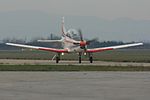 |
advanced trainer | PC-9M | 3 17 |
Three second-hand PC-9/A acquired from RAAF in 1997, modernised to PC-9M. All PC-9M's are produced in 1997 and enetered full service in 1998. Three to six units are to be sold in the near future. | ||
| Zlin 242 |  |
basic trainer | 242L Aerobatic | 5 | All aircraft produced and entered service in late 2007. | ||
| Aerial Firefighting Aircraft | |||||||
| Air Tractor AT-802 |  |
United States | firefighting, coastal patrol | AT-802F AT-802AF AT-802 |
1 1 4 |
All aircraft (except one) produced and entered service in 2008. | |
| Canadair CL-415 |  |
firefighting | CL-415 | 6 | All aircraft were acquired as newly built aiframes from 1999 till 2010 in four different batches. | ||
| Transport and Liaison Aircraft | |||||||
| Antonov An-32 |  |
tactical transport | An-32B | 2 | Serial 707 was produced in 1993 and serial 727 in 1991. Both units entered service in 1996 and were later modernized in two stages; in 2004 and again in 2007. According to recently unveiled plans both aircraft are to be sold and a single replacement aircraft (probably a single engine light cargo aircraft) is to be acquired for paratrooper training and light transport. True replacement transporters to be considered only after 2020. | ||
| Bombardier Challenger 600 | 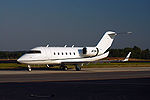 |
VIP transport | CL-604 | 1 | Government aircraft on civilian register, used also for urgent medical transport. | ||
| UAV's | |||||||
| Elbit Skylark | 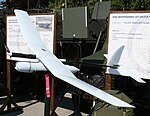 |
reconnaissance | Skylark I | 6 | Acquired in 2007 and 2008, more to be ordered. Used by the Army. | ||
| Elbit Hermes 450 |  |
reconnaissance | Hermes 450 | 2 | Order placed in 2007 but no evidence of having been introduced into service. | ||
| Transport and Utility Helicopters | |||||||
| Mil Mi-17 |  |
combat-support helicopter transport helicopter |
Mi-171Sh Mi-17-1V |
10 11 |
Acquired new and entered service in 2008, aka Mi-8AMTSh. Most units acquired new between 1992 and 1994, aka Mi-8MTV-1. All 11 helicopters underwent general overhauls between 2003 and 2005 and are scheduled to undergo another series of overhauls between 2013 and 2015 in Ukraine. | ||
| Mil Mi-8 | 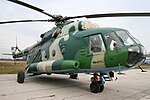 |
transport helicopter | Mi-8T | 3 | All three units underwent an overhaul in 2005 and will undergo another one in 2015. | ||
| Bell 206 |  |
United States | training helicopter, light utility | 206B-3 | 8 | Helicopters were acquired new and entered service in 1997. Two were lost in 1998 due to pilot errors and exceeding flight parameters. | |
Aircraft that have been retired[]
- 2 Mikoyan-Gurevich MiG-21- used for spare parts
- 2 Soko G-2 Galeb – retired in 1996 due to the lack of spare parts
- 1 Soko J-21 Jastreb – retired in 1996 due to the lack of spare parts
- 1 Soko J-20 Kraguj – retired due to overall obsolescence in 1996
- 1 Lola Utva 60 – retired in 90's
- 4 Lola Utva 66 – retired in 90's
- 11 Lola Utva 75 – put out of service recently, replaced by Zlin 242L
- 3 Canadair CL-215 Scooper – last retired in 2004, replaced by Canadair CL-415 Superscooper
- 2 Air Tractor AT-400 – retired in 1993
- 1 Dornier Do 28 – retired in 2004
- 1 Dassault Falcon 10 – replaced by Bombardier Challenger 600
- 11 Antonov An-2 – handed over to aeroclubs throughout the years, some can be called into service
- 4 Cessna 172 – retired in 1997
- 2 Cessna A.188B Agwagon – retired in 1992
- 1 Cessna T.210N Centurion – retired in 2004
- 4 Piper PA-18 Super Cub – retired in 1996
- 2 Piper PA-25-235 Brave – retired in 1992
- 3 Piper PA-28 Warrior – retired in 1997
- 1 Piper PA-31P – retired in 2005
- 2 Piper PA-36 Pawnee Brave – retired in 1992
- 2 PZL M-18 Dromader – retired in 1992
- 9 Mil Mi-24D/V – withdrawn in 2002 (Mi-24D) and 2005 (Mi-24V), 6 up for sale
- 7 Mil Mi-8T/S – used for spares
- 3 Agusta Bell 212 – transferred to the Croatian Police
- 4 MD Helicopters MD 500 – last retired in 2001, replaced by Bell 206
- 1 Agusta-Bell AB.47J-2A – retired to museum in 1992
See also[]
- History of Croatian Air force
- Austro-Hungarian Imperial and Royal Aviation Troops
- Yugoslav Royal Air Force
- Air Force of the Independent State of Croatia
- Croatian Air Force Legion
- Yugoslav Partisans
- Balkan Air Force
- Yugoslav Air Force
References[]
- Lisko, T. and Canak, D., Hrvatsko Ratno Zrakoplovstvo u Drugome Svejetskom Ratu (The Croatian Airforce in the Second World War) Zagreb, 1998 ISBN 953-97698-0-9.
- Savic, D. and Ciglic, B. Croatian Aces of World War II Osprey Aircraft of the Aces – 49, Oxford, 2002 ISBN 1-84176-435-3.
Notes[]
- ↑ http://www.osrh.hr/prikaz_hr.asp?go@=774&Uvf=4
- ↑ http://www.scramblemagazine.nl/orbats/croatia
- ↑ Air Forces Monthly, Feb 2013 Edition, Key Publishing
- ↑ http://www.flightglobal.com/news/articles/croatia-to-refurbish-migs-delaying-new-combat-type-386940/
- ↑ "Ukraine wins tender to repair Croatian MiG-21 fighters" June 26, 2013
- ↑ http://www.vecernji.hr/vijesti/remont-sedam-migova-nabava-jos-pet-13-9-milijuna-eura-clanak-580964
- ↑ 7.0 7.1 7.2 http://www.vecernji.hr/vijesti/hv-ce-imati-bojnu-500-vojnika-ratovanje-svijetu-clanak-590944
- ↑ http://dnevnik.hr/videoteka/vijesti/hrvatska/vojni-piloti-prezaposleni-hitnim-medicinskim-letovima-video-dnevnik-nove-tv.html
- ↑ http://www.jutarnji.hr/morh-za-vojsku-kupuje-deset-novih-helikoptera-/1056786/
- ↑ http://www.novilist.hr/Vijesti/Hrvatska/Plan-nabave-MORH-a-tezak-4-7-milijardi-kuna-Najvaznija-nabava-borbenih-zrakoplova-i-ophodnog-broda
- ↑ Croatian military aviation OrBat
- ↑ "World Air Forces 2013". Flightglobal.com, December 11, 2012.
External links[]
| Wikimedia Commons has media related to Air force of Croatia. |
- Official website (English version)
| |||||||||||||||||||||||||
| ||||||||
The original article can be found at Croatian Air Force and Air Defence and the edit history here.
